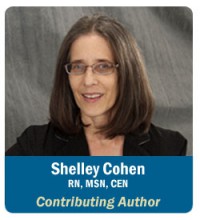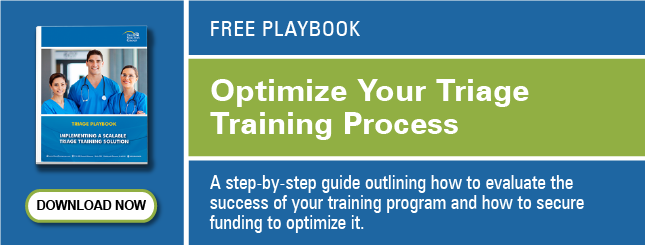 Patients with mental health complaints are visiting emergency departments and urgent care centers at an increasing rate. It is imperative that triage staff are able to make rapid and safe decisions for these patients.
Patients with mental health complaints are visiting emergency departments and urgent care centers at an increasing rate. It is imperative that triage staff are able to make rapid and safe decisions for these patients.
Rule #1: Make No Assumptions
Making assumptions in triage is dangerous. Our subconscious biases can lead to cognitive errors in the assessment of patients, particularly those who are agitated. Here we will outline four commonly made assumptions that can lead to high-risk safety concerns for not only the patient, but also any surrounding patients and staff.
“The patient was very cooperative while in the ambulance, so he should be calm here.”
Just as with the stock market, a patient’s “past performance does not necessarily predict future results.” First impressions from EMS are valuable, but everyone involved in the subsequent care of a patient should not blindly assume that the patient’s condition is static. Changes in a patient’s environment and care team can lead to changes in patient behavior. Be mindful of how a patient interacts. Beware of accepting any “label” given to a patient by a prior caregiver, and perform your own careful assessment. Don’t become a victim of this cognitive error known as “diagnostic momentum.”
“I took care of this patient last time and had no problems. She’ll be fine.”
A lot can happen to a patient between visits, and staff may not be aware of all the events and circumstances. Until further details are confirmed, they have no way of knowing the patient’s potential to act out against themselves or others. Focus on the details of this visit, not the last one. All staff members should avoid this cognitive bias known as “posterior probability error.”
“They medicated the patient en route, so she should not be a problem.”
Maybe the patient’s behavior won’t be an issue, but her breathing might be. A sedate patient is not always a good patient, especially if the quiet behavior is accompanied by hypoventilation and hypoxia secondary to medication-induced respiratory depression. Always start by assessing the ABCs, especially in patients whose behavior changes from agitated to serene after medication administration.
“The patient’s parents are in there with him. They are nice folks, so you have nothing to worry about.”
 The presence of family and friends may be calming for some patients, but a catalyst for agitation in others. Furthermore, the effect of having company present might change over time. Watch for any swings, as the situation has potential to shift quickly.
The presence of family and friends may be calming for some patients, but a catalyst for agitation in others. Furthermore, the effect of having company present might change over time. Watch for any swings, as the situation has potential to shift quickly.
The Bottom Line
Don’t let your guard down by jumping to unwarranted conclusions about a patient. Your biases can lead to assumptions that result in cognitive errors during the assessment of patients with agitation and mental health issues. Follow your organizational policies regarding the direct placement of these agitated patients in an exam room and the removal of articles and objects that have the potential to create safety hazards.
Triage Level
According to both ESI and CTAS triage scoring guidelines, patients who present with acute agitation are assigned a Level 2 triage.
This content is republished here with permission from Health Resources Unlimited. All rights reserved.


